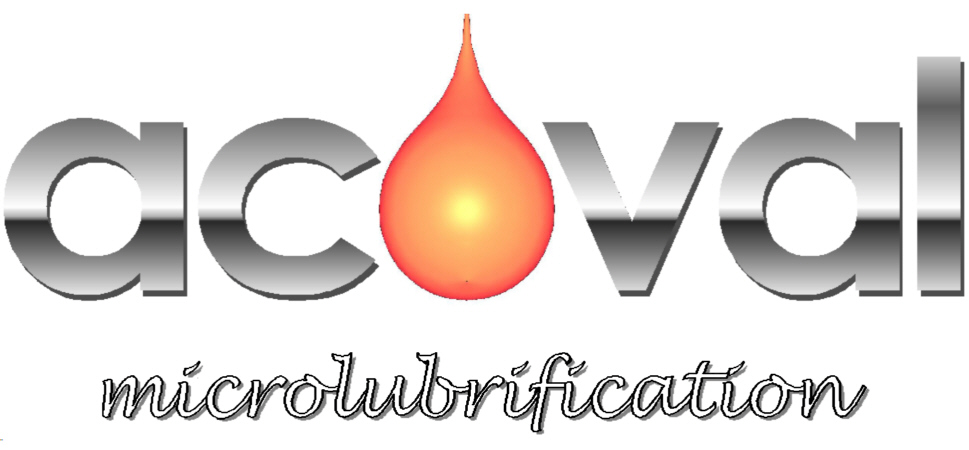
 |
Français |
|
|
Printable version |

|
||||
|
The principles of microlubrication
|
| |||
Microlubrication, also named minimum quantity lubrication (MQL) is a technology which deposits accurate amounts of liquid mainly in a process.
Amounts of liquid are delivered by volumetric micropumps. The capacity of most micropumps is adjustable. Operation cycles and the capacities of micropumps determine the liquid flow. The liquid flow may be adjusted from 77 mm3 to more than 1.4 litre per hour.
The liquid supplied by micropumps may be transferred:
Nozzles are connected to micropumps by hoses, sometimes by rigid pipes or quick couplings.
| Single pipes carrying a mist | Coaxial pipes carrying liquid and compressed air without mixing them |
|---|---|
| A micropump can supply many nozzles. | Each nozzle is associated with a micropump. |
|
|
Most micropumps used in microlubrication devices are volumetric pumps. They are fitted with a hydraulic piston which carries out the liquid through a directional valve. A pneumatic piston moves the hydraulic piston. If this feature exists, the hydraulic piston takes adjustable quantities of liquid by setting:
In a microlubrication device, must be managed:
| Device type | Management of micropumps | The air supplying of nozzles |
|---|---|---|
| Do not pay attention to this column if the liquid is delivered without using compressed air to spray it. | ||
| Pulse devices | Micropumps deliver amounts of liquid each time the device is activated. | Nozzles are supplied with compressed air each time the device is activated. |
| Continuous devices | A sequencer puts rhythm to the micropumps during all device activations. | Nozzles are supplied with compressed air during all device activations. |
| Free devices | Users manage micropumps. | Users manage the compressed air supplying of nozzles. |
| Devices with integrated complex management | Management by automatism | Management by automatism |
When a liquid falls down from a hole, the size of drops is managed by the superficial tension phenomena.
Nozzles must carry the liquid to the final destination with the accurate form (geometric, spraying thinness,...) maybe using compressed air.
Nozzles with compressed air must spread liquid out over time.
| the amount of liquid delivered at a hole each time a micropump is activated is : | Natural behaviour | To extract the liquid each pulse | To spread the liquid out over time |
|---|---|---|---|
| bellow a drop | A drop falls down from time to time but not each time the micropump is activated | It's necessary:
| Use of compressed air and nozzles |
| equal to a drop | A drop falls down each time the micropump is activated | Use of compressed air and nozzles | |
| more than a drop | A drop falls down each time the micropump is activated. Other drops fall down from time to time. | Use of compressed air and nozzles (top) |
ACOVAL microlubrication devices are fitted with:
ACOVAL microlubrication devices are fitted with micropumps whose capacities are adjustable:
VIBRACO builds microlubrication devices with all sort of management described before.
Each microlubrication device is designed in accordance with its use (viscosity, lubricant, environmental conditions).